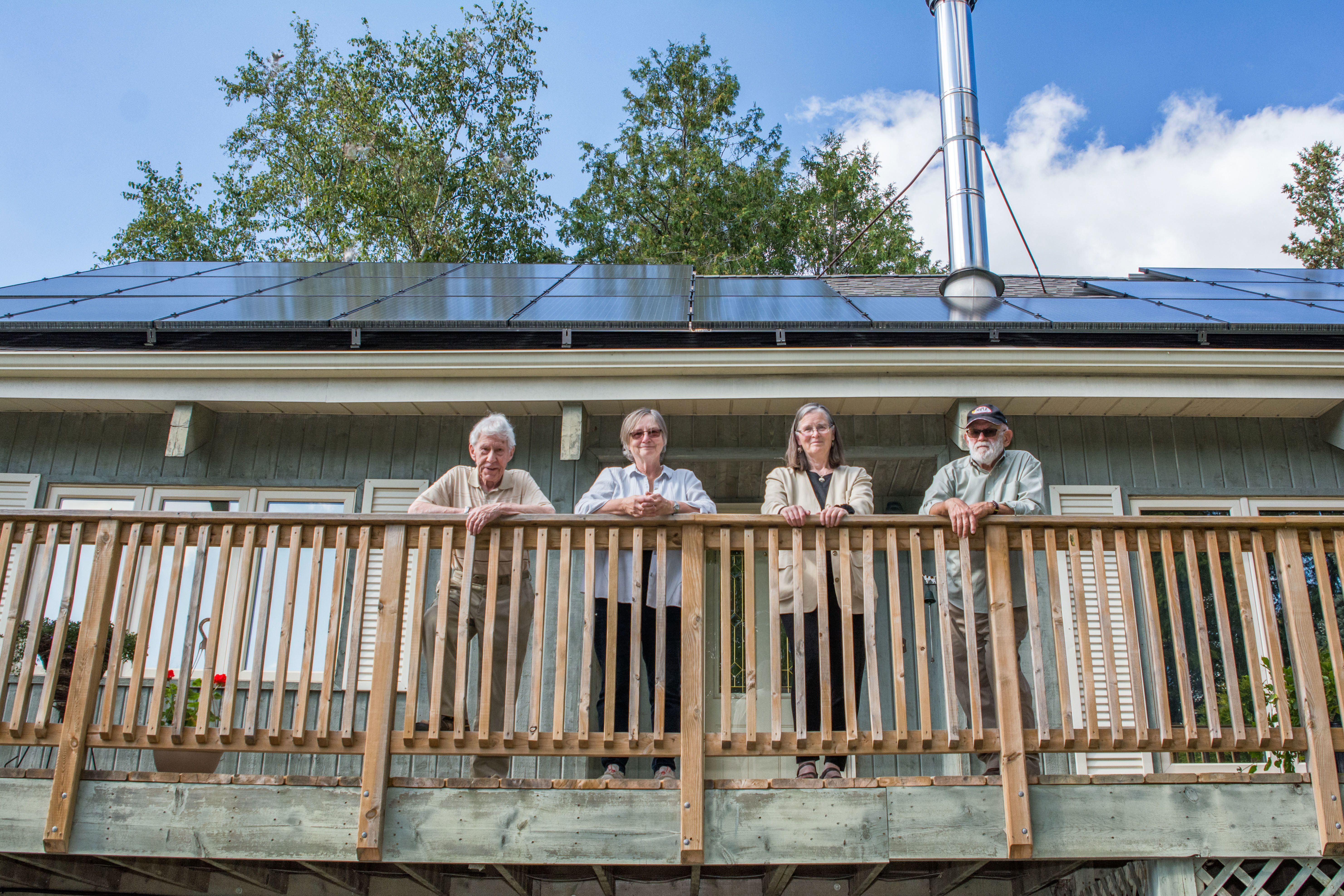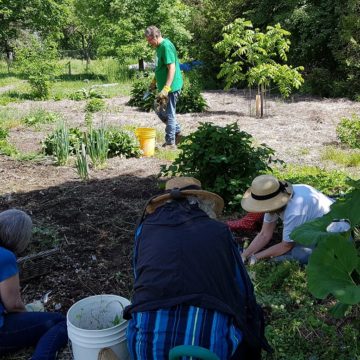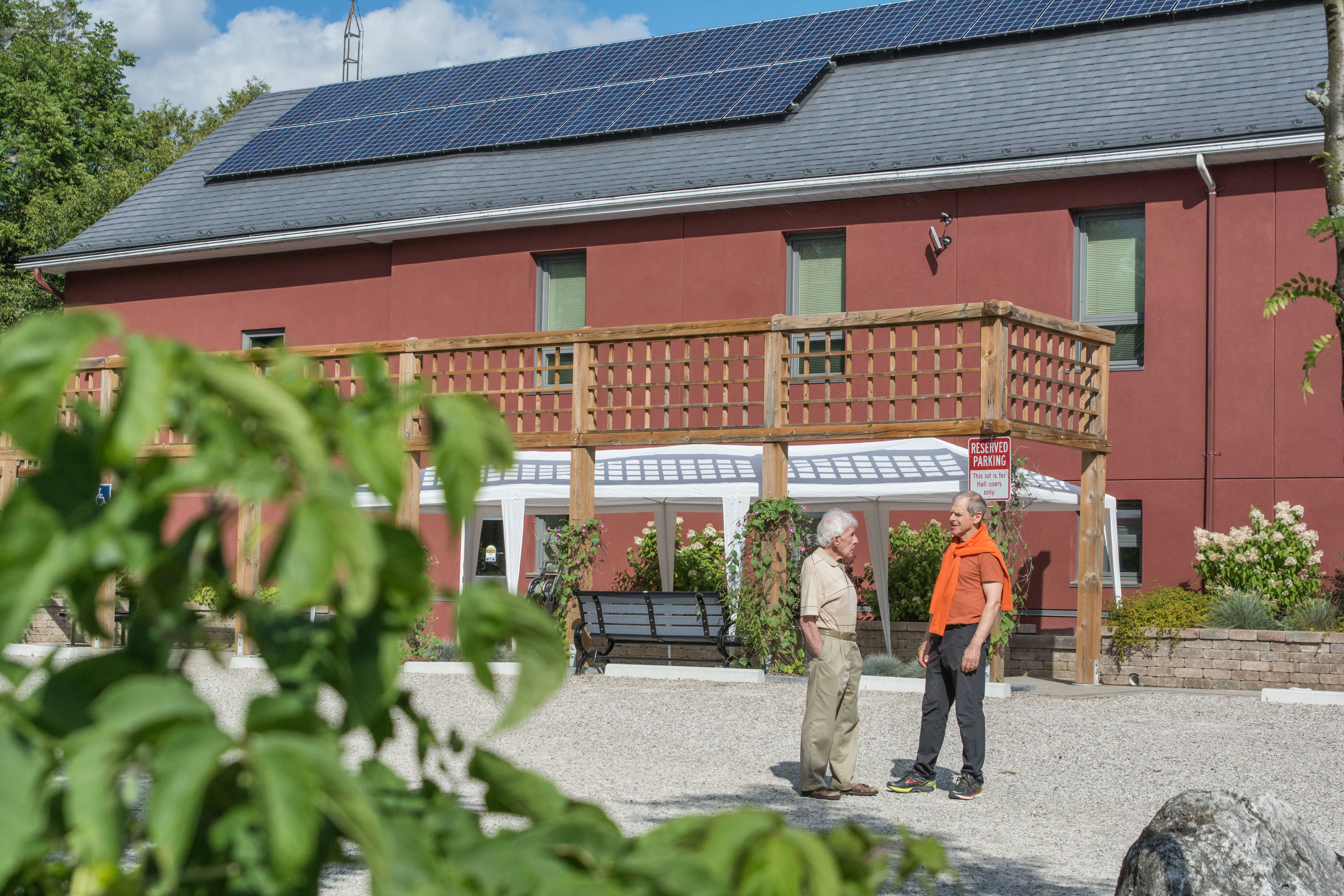Eden Mills: Going Carbon Neutral

Projects Sponsor
It takes a really amazing village: Eden Mills Going Carbon Neutral
Let’s begin by making it clear that no one was tossed out for not participating in the Eden Mills’ efforts to go carbon neutral. Residents’ participation in the project–which was spearheaded by architect, planner and fellow Eden Mills resident, Charles Simon–was entirely voluntary from the get-go. No one is judged or shamed if they choose not to take part and yet participation in the leafy, picturesque village on southwestern Ontario’s Eramosa River was extremely high – it was standing room only in the community hall at the 2007 launch.
One of the ideas behind the project, inspired in part by the achievements made in Ashton Hayes, which aims to become England’s first carbon-neutral village, is that taking individual action would go some way towards reducing anxiety about global warming and the climate change crisis. The 350 or so residents of Eden Mills were offered a positive way to make a difference while having fun along the way and they responded to that opportunity eagerly.
The goal was to get Eden Mills to the point where it emits no more CO2 than it absorbs. The approach taken by the residents and volunteers was three-pronged: Reduce, Replace, Absorb. They also committed to measuring the baseline emissions/absorption in order to assess the impact of actions on the village’s carbon footprint over time.
Eden Mills didn’t work alone. Wellington County’s Green Legacy Tree Nursery provided young trees to residents to increase tree coverage. Lloyd Grinham Architects, provided all technical drawings for tenders and implementation. Enermodal Engineering donated services of Richard Lay before his retirement from the company, after which he volunteered. Several other companies donated products.
The project also made contact with the nearby University of Guelph which provided support in the form of CO2 sequestration expertise and of 4th year environmental studies students ready to assist in a survey covering 164 households. The survey focused on household energy use and local and international travel emissions, establishing a baseline emissions footprint of 4608 tonnes of CO2. In parallel, a study of village trees and vegetation was undertaken that measured baseline sequestration to be 2609 tonnes, or 56% of village emissions – a big natural start on the road to carbon neutrality.
In order to identify concrete actions that could be taken to reduce emissions, a comprehensive series of workshops by experts and professionals was presented (all recorded on video and available for future use) beginning with the priorities of conservation measures and building alternate, sustainable energy systems. The idea was to take the mystery out of reducing emissions and help identify affordable priorities for residents.
Residents were also encouraged to do an energy audit to determine the footprint of their houses. In subsequent surveys, residents were able to see the resulting decrease in emissions, and results there were. Since 2007, residents have reduced household CO2 emissions and increased CO2 sequestration. An energy retrofit of the Community Hall, where things got started, was completed in 2017, bringing the heritage building to 94% carbon neutrality – a tangible, replicable model of the project’s goals.
Resident actions over the next 6 years alone (installing insulation, energy-efficient furnaces, solar panels and switching to hybrid cars, amongst many other things) further reduced household emissions by about 12% and increased sequestration through tree planting by 6%, leaving about 26% of the baseline CO2 emissions to neutralize.
And yes that promised fun was had. Young people in the village were excited to form a Youth Group, a Carbon Neutral Anthem was created and performed by young children, a video of children’s concerns and hopes was created, and outreaches to the regional school board were established. Eden Mills has showed us that with an enthusiastic and passionate population, no community is too small to make an impact in the fight against climate change.






















